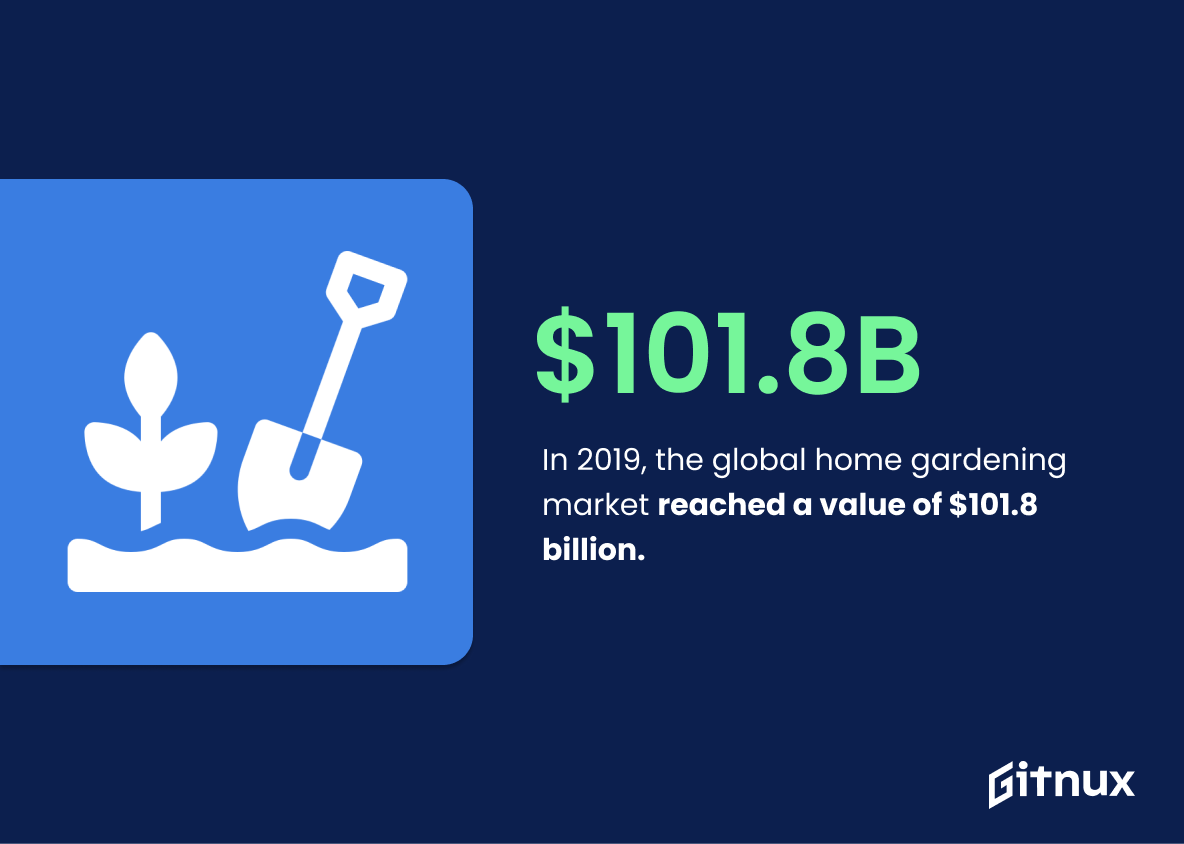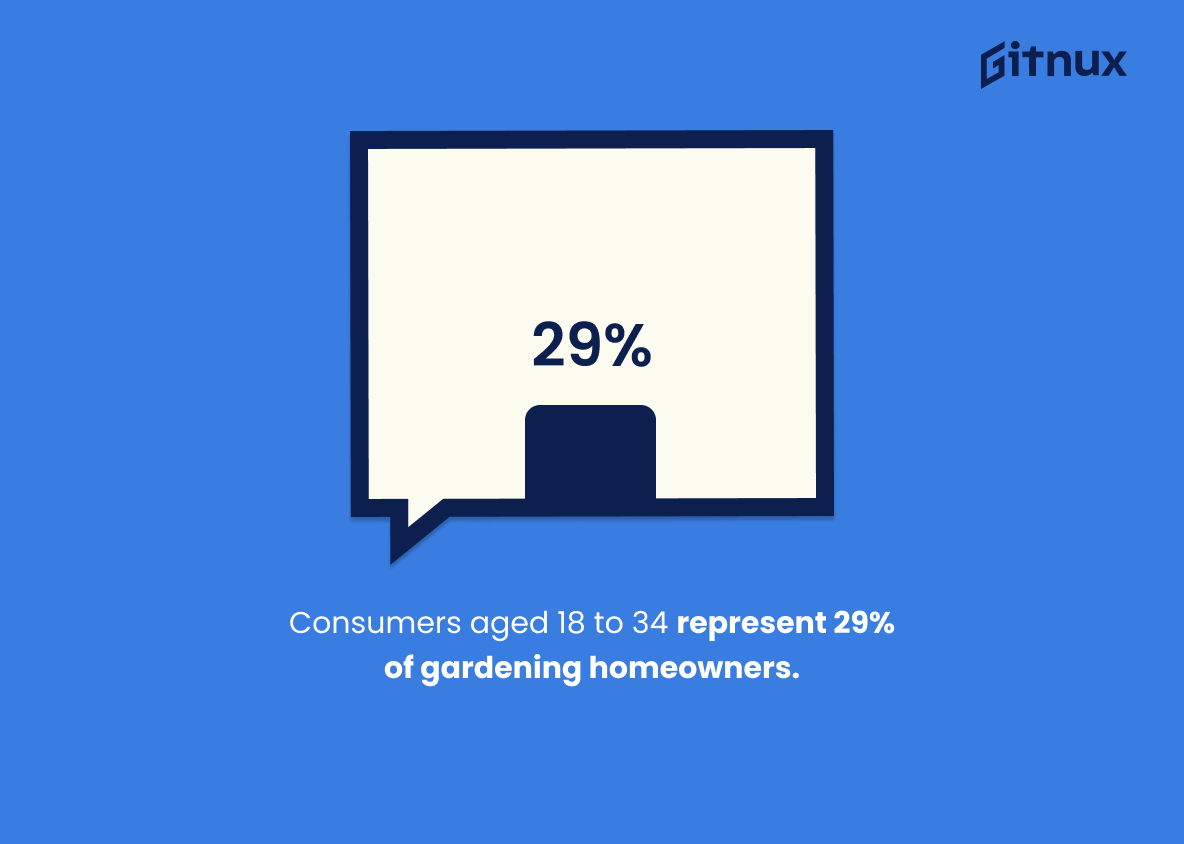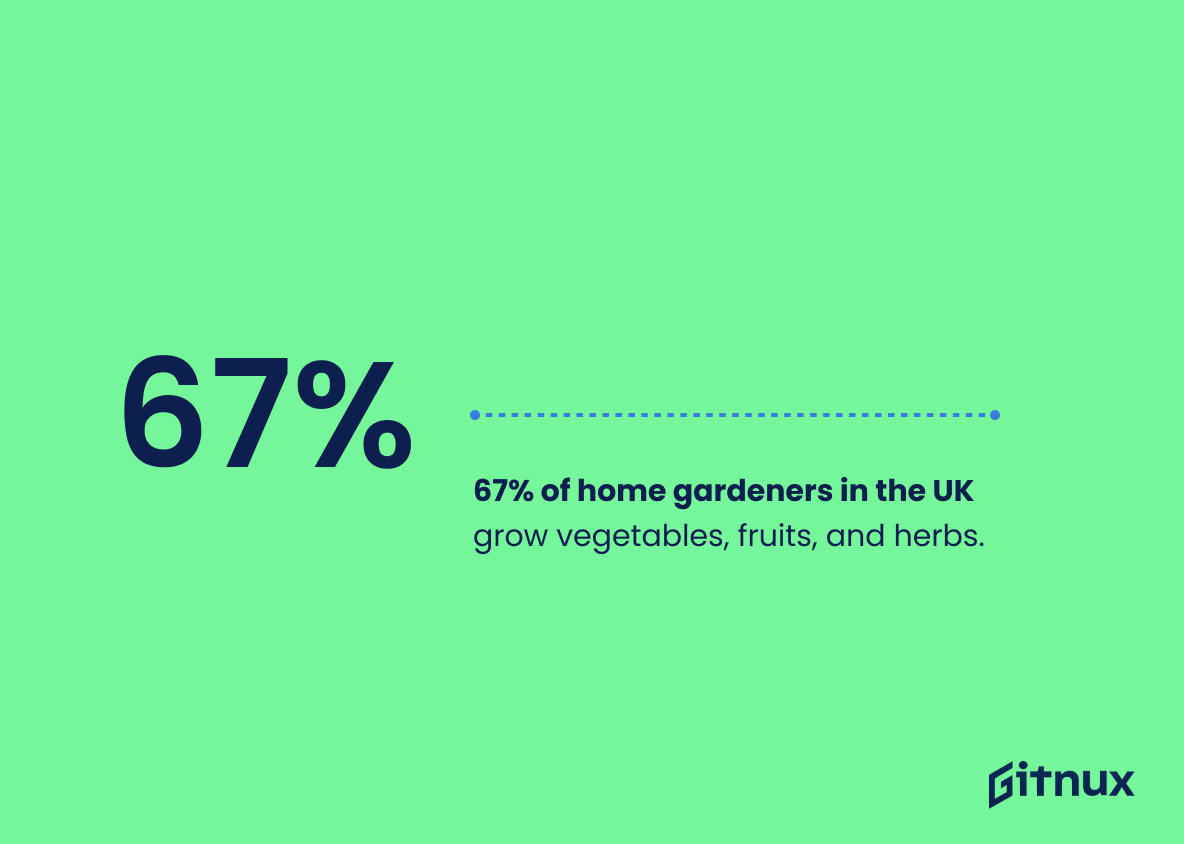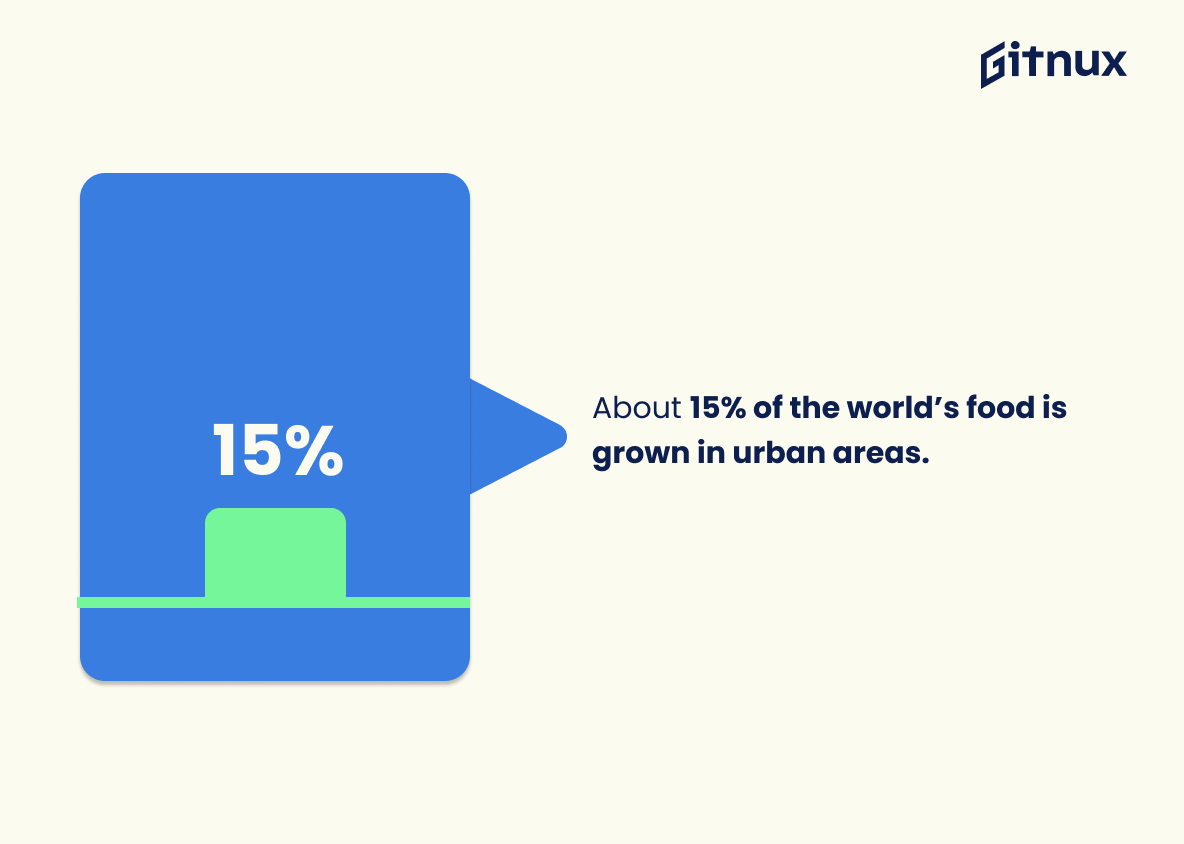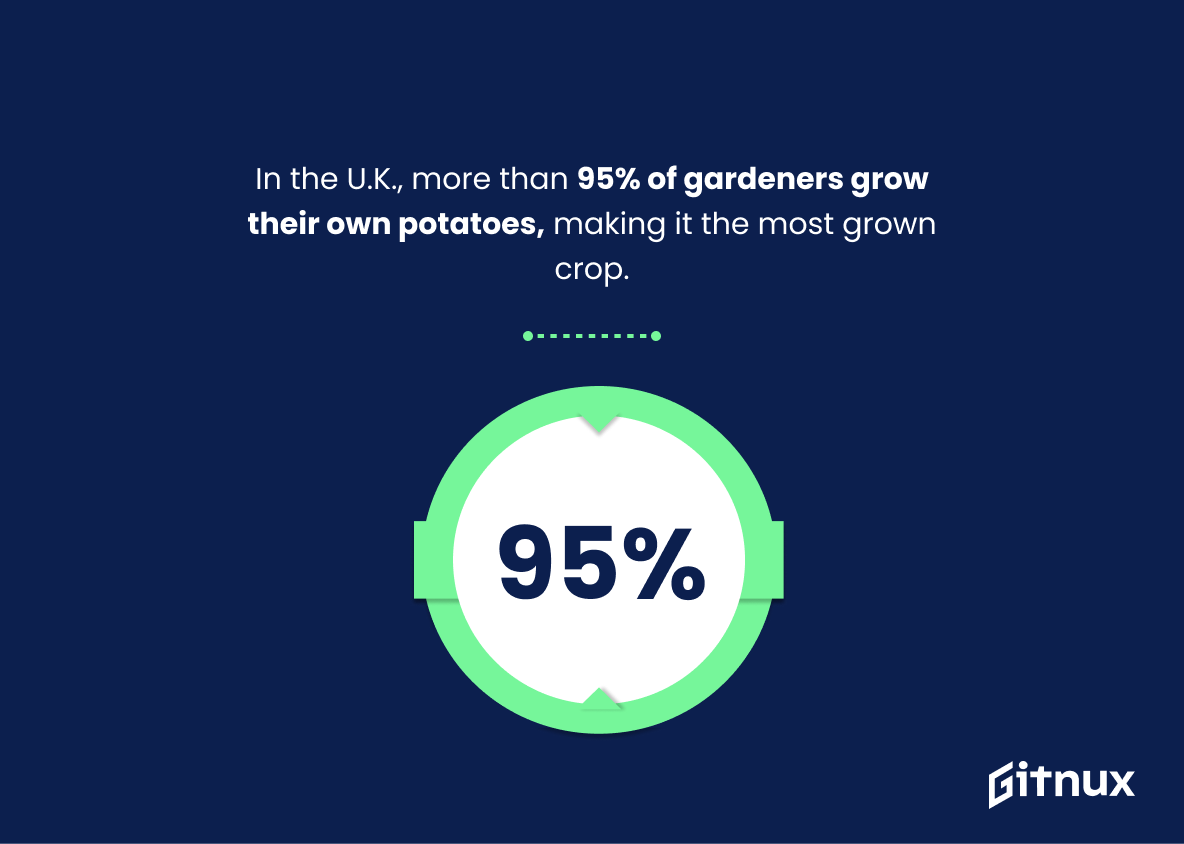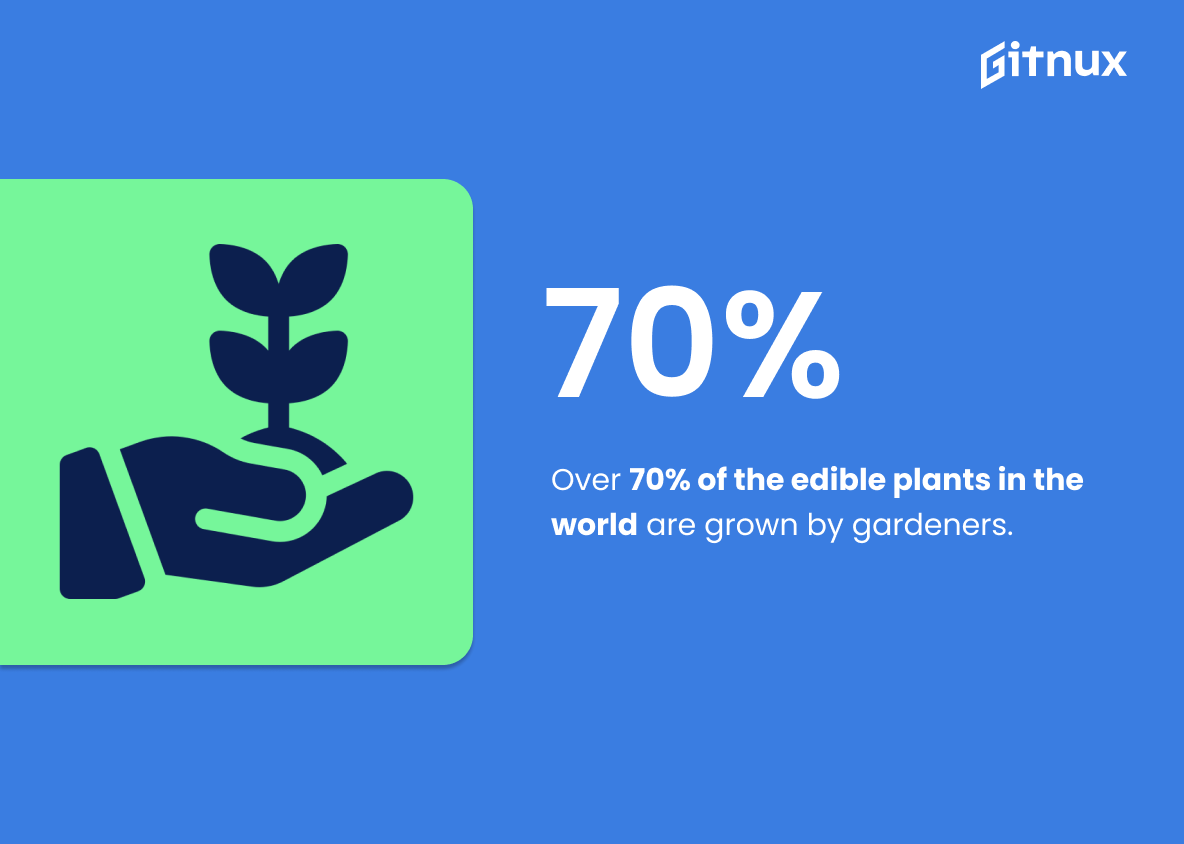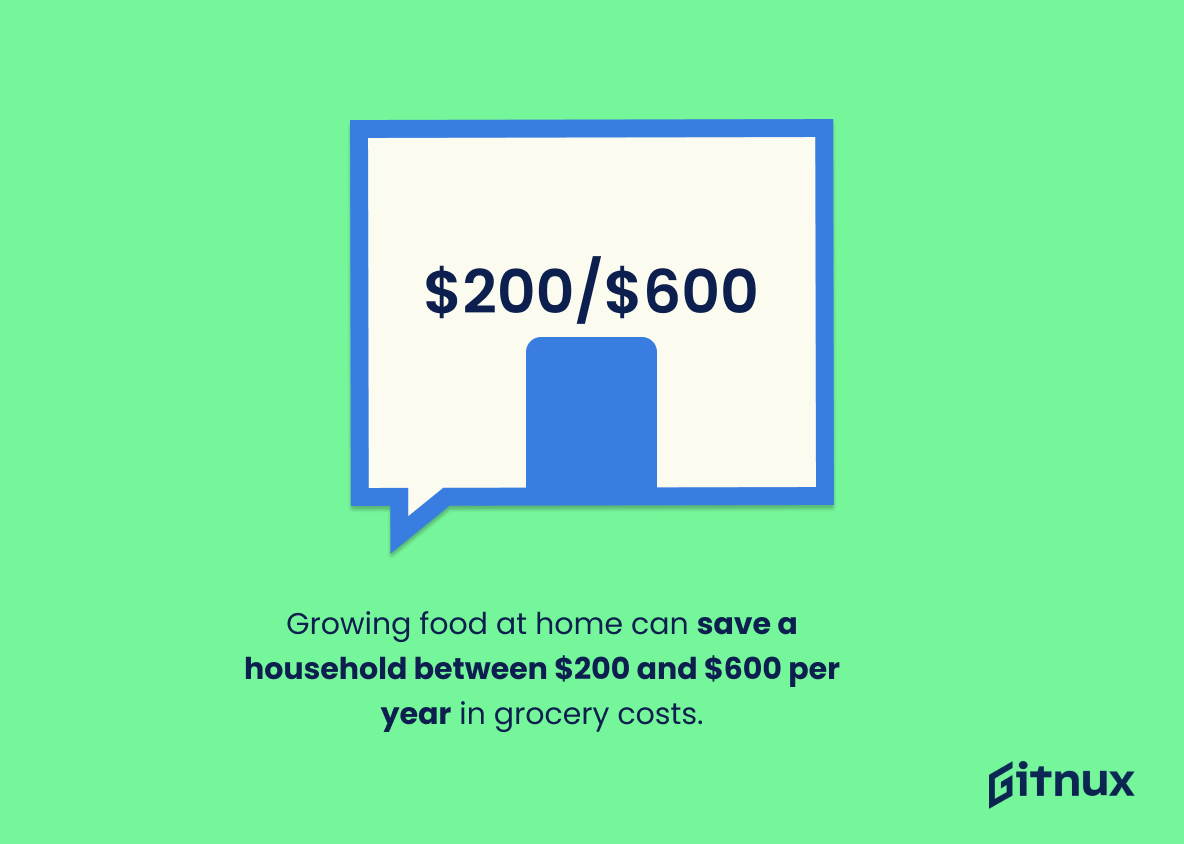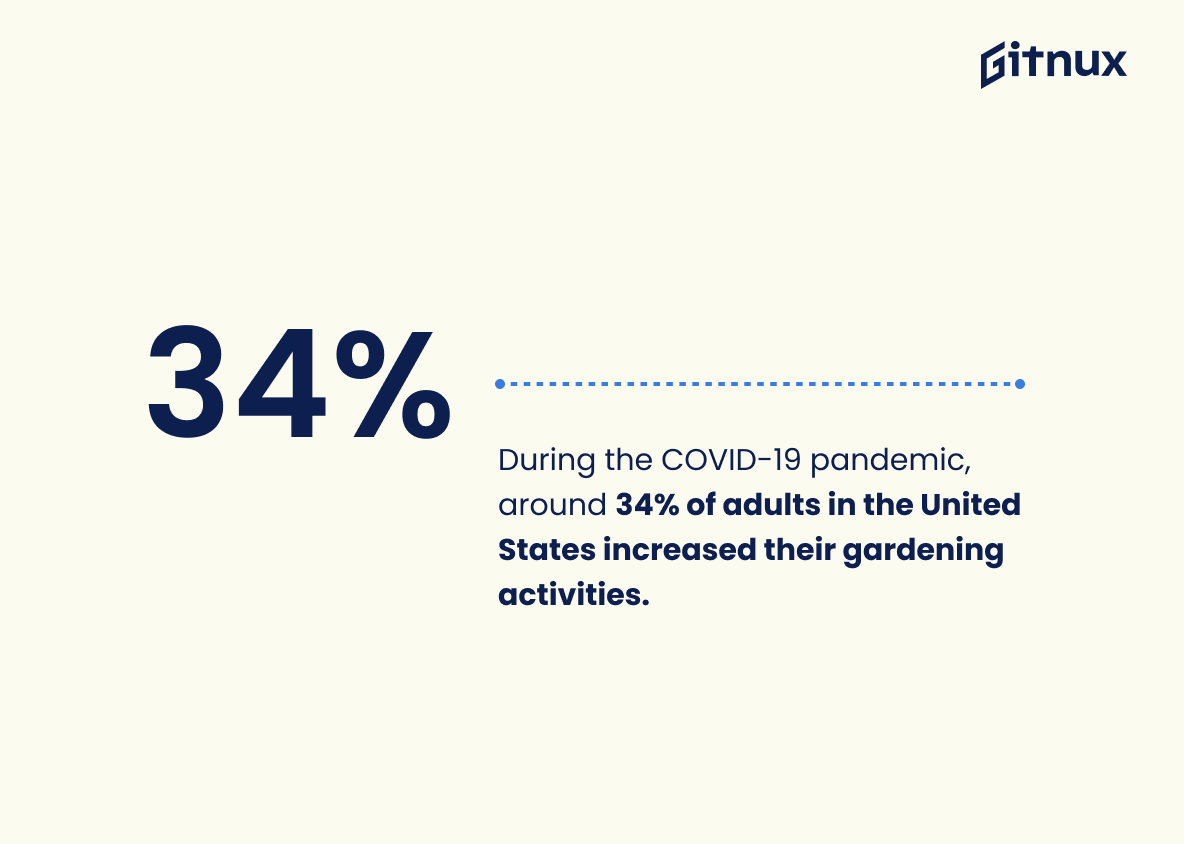Gardening is a popular hobby that has been around for centuries. It’s no surprise then, that home gardening statistics show an increase in the number of households participating in food gardening over the past decade. In 2020, 35% of U.S. households participated in food gardening compared to 23% back in 2008 – and this trend looks set to continue as more people discover the joys of growing their own produce at home. But what else do these stats tell us about modern-day gardeners?
We can see from various sources that not only are more people taking up home gardening than ever before but they’re also spending money on supplies too; with typical annual spend reaching $400 per year according to one survey conducted by Garden Org. Furthermore, 74% of gardeners purchased their supplies online last year which shows how technology is making it easier than ever for them to get hold of everything they need quickly and conveniently without having to leave their homes or gardens.
Digging deeper into these figures reveals some interesting insights into who exactly is doing all this planting and harvesting: 65% grow vegetables while 92%, unsurprisingly perhaps given its popularity worldwide, choose tomatoes as their top crop choice – followed closely by peppers (83%) and cucumbers (77%). Women make up 51%, slightly edging out men’s 49%. And when it comes age groups 18-34 represent 29%.
The global market value for Home Gardening was estimated at $101 billion dollars last year showing just how much potential there still remains within this sector despite its long history – especially considering 15 percent of world’s food supply now comes from urban areas where space may be limited yet creativity abounds. Finally we know consumers spent almost 50 billion dollars on lawn & garden products alone during 2019 whilst saving between 200-600 dollars annually through growing edible plants themselves rather than buying them ready made from stores or markets…and let’s not forget those 5 hours each week dedicated solely towards tending our beloved plots either.
So whether you consider yourself a beginner gardener looking for tips & tricks or an experienced green thumb seeking new challenges there really does seem something here suitable everyone regardless your level expertise.so why wait any longer?.
Home Gardening Statistics Overview
In 2019, the global home gardening market reached a value of $101.8 billion.
This statistic is a testament to the immense popularity of home gardening, demonstrating that it is a thriving industry with a large customer base. It is a clear indication that home gardening is a worthwhile pursuit, and that it is a great way to invest time and money. This statistic is a powerful reminder of the potential of home gardening, and serves as a great starting point for anyone interested in learning more about the industry.
Consumers aged 18 to 34 represent 29% of gardening homeowners.
This statistic is significant in the context of a blog post about Home Gardening Statistics because it reveals that a large portion of gardening homeowners are young adults. This indicates that home gardening is a popular activity among the younger generation, and that it is likely to remain popular in the future.
67% of home gardeners in the UK grow vegetables, fruits, and herbs.
This statistic is a testament to the popularity of home gardening in the UK, with the majority of gardeners growing vegetables, fruits, and herbs. It speaks to the fact that home gardening is a popular activity among UK citizens, and that it is a great way to get fresh, healthy produce. This statistic is important to consider when discussing the benefits of home gardening, as it shows that many people are already taking advantage of the activity.
About 15% of the world’s food is grown in urban areas.
This statistic is a powerful reminder of the potential of urban areas to produce food. It highlights the fact that home gardening can make a significant contribution to the global food supply, and that even small-scale efforts can have a big impact. It also serves as an inspiration to those who are interested in growing their own food, as it shows that it is possible to make a difference in the world’s food supply.
In the U.K., more than 95% of gardeners grow their own potatoes, making it the most grown crop.
This statistic is a testament to the popularity of home gardening in the U.K. It shows that a large majority of gardeners are taking the initiative to grow their own potatoes, which is a great way to save money and enjoy fresh produce. This statistic is a great example of how home gardening can be a rewarding and beneficial activity.
Over 70% of the edible plants in the world are grown by gardeners.
This statistic is a testament to the power of home gardening. It shows that gardeners are responsible for cultivating the majority of edible plants in the world, which is an impressive feat. It also highlights the importance of home gardening in providing food for people around the world. This statistic is a reminder of the impact that home gardening can have on the global food supply.
Growing food at home can save a household between $200 and $600 per year in grocery costs.
The potential savings of up to $600 per year in grocery costs that can be achieved through home gardening is a compelling reason to consider taking up this hobby. Not only can it provide a sense of accomplishment and satisfaction, but it can also help to lighten the load on the family budget.
During the COVID-19 pandemic, around 34% of adults in the United States increased their gardening activities.
This statistic is a powerful indicator of the impact the COVID-19 pandemic has had on the home gardening industry. It shows that a significant portion of the population has taken up gardening as a way to cope with the pandemic and its associated restrictions. This statistic is a testament to the resilience of the human spirit and the power of nature to bring us joy and comfort in difficult times.
Conclusion
Home gardening is a popular activity that has seen an increase in participation over the past decade. In 2020, 35% of U.S. households participated in food gardening, up from 23% in 2008 and spending around $400 per year on supplies. 74% of gardeners purchased their supplies online while 65% grew vegetables with tomatoes being the most popular choice among them at 92%. Globally, home gardening reached a value of $101.8 billion in 2019 and 51% of home gardeners are women while 49 % are men; 29 percent were aged 18 to 34 years old. The UK saw 67 percent growing vegetables fruits and herbs with potatoes as the most grown crop whereas 15 percent of world’s food was grown by urban areas globally .
Growing food at home can save between $200-$600 annually for households according to research findings Container gardens have been practiced by 17-9%, bird friendly activities such as providing feeder water sources or nesting boxes engaged 45 % of Americans , 5 hours weekly spent working on gardens during pandemic times when 34 % increased their activities . Lawn & Garden retail sales hit record high reaching US$49 3 billion 2018 showing its popularity amongst people worldwide.. Home Gardening is not only beneficial but also enjoyable hobby which helps us connect more deeply with nature.
References
0. – https://www.www.businesswire.com
1. – https://www.anthropocene.info
2. – https://www.www.bbc.com
3. – https://www.www.researchgate.net
4. – https://www.www.statista.com
5. – https://www.extension.umaine.edu
6. – https://www.www.npr.org
7. – https://www.agrisk.umn.edu
